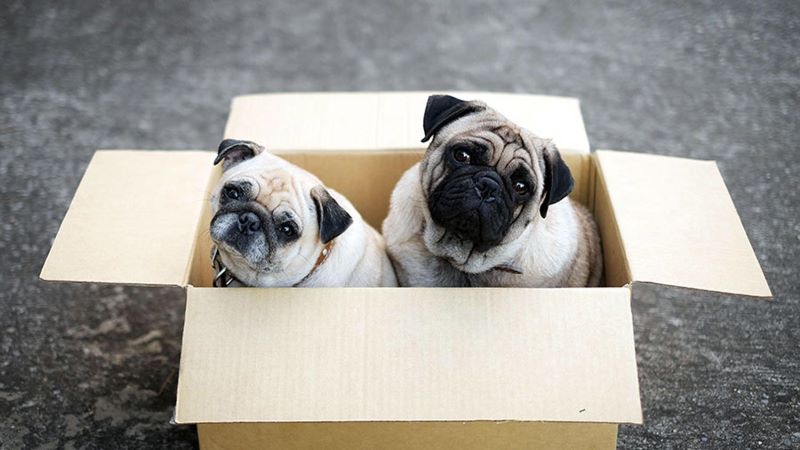Moving to a new home is a big change that can be stressful for your furry friend, but with a little preparation, you can ease his anxiety. Read our tips to learn how to be ready before, during and after a move.
Before the move:
- Make a plan for your pet. Consider whether your pet can handle being with you and your family or if he will do better being boarded.
- Enroll in pet insurance to ensure you can provide the best vet care should your pet become sick or injured during the move.
- Begin to acclimate your dog or cat to his carrier or crate, especially if he has not spent much time there. The carrier is a safe place for your pet to hide if he needs to get away from the chaos of the packing. My parents put their dog in her crate when they are packing their car for a trip because she gets nervous she’ll be left behind. Once in her crate, she is reassured she will be going along.
- If you have decided to board your pet, make arrangements.
- If you are moving far away from home, find a reliable vet in your new area. In her post, Moving and Packing Your Pets, Patty Khuly VMD, MBA mentions that waiting until you are settled in your new home can “waste precious time that your dog’s health and well-being may not be able to afford.”
During the move:
- Make sure your pet’s immediate needs are met before you leave. He should have an opportunity to go potty, eat, and have some playtime.
- If you are moving a long distance, map out your route, taking note of pet-friendly stops/hotels along the way.
- Use a carrier to transport your pet. According to Dr. Patty Khuly, “A crate gives your dog a home-within-a-home, a safe and comfortable place to be when the dog is confused or fearful, both during the move and once in the new home.” If your pet is not accustomed to riding in the car or in a carrier, begin to practice well before your move. Start with short trips, to fun places like the park, so he will associate car rides with pleasurable activities.
- Resist the urge to let your pet wander throughout the car. A friend and fellow cat lover told me of a time she and her husband moved across several states and their cat shimmied under the gas pedal and almost got stuck. The carrier is the safest place for your pet to be.
After the move:
- Examine your new home for potential dangers, inside and out. See this list for plants that can be hazardous to your pet.
- Immediately set up your dog’s crate, cat’s litter box, food and water, and toys to give your pet a sense of the familiar.
- Keep to your schedule. In the feature, The Vets Will See You Now in the July 2016 issue of Real Simple magazine, veterinarian Lisa Radosta says, “At first they may show signs of anxiety, like hiding or decreased activity.” But if you stay as close as possible to your regular schedule and mimic your old house’s environment, your pet should feel at home in no time.
- Supervise outside time. Your new backyard is unfamiliar territory and your pet could wander off.
- Keep your cat in one small area, complete with litter box and food/water, for a week or two to help him acclimate to the new space. If you have multiple cats, keep them in separate zones so they can get used to their new environment without competing for food and water.
With our tips, moving should be a breeze for you and your fur babies! One can dream, right?

